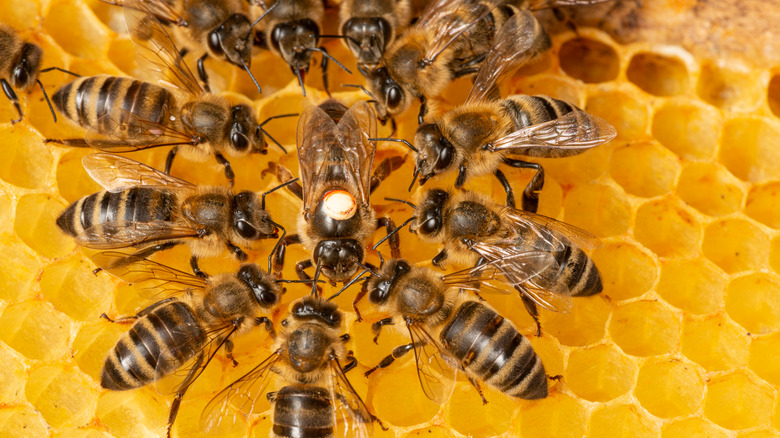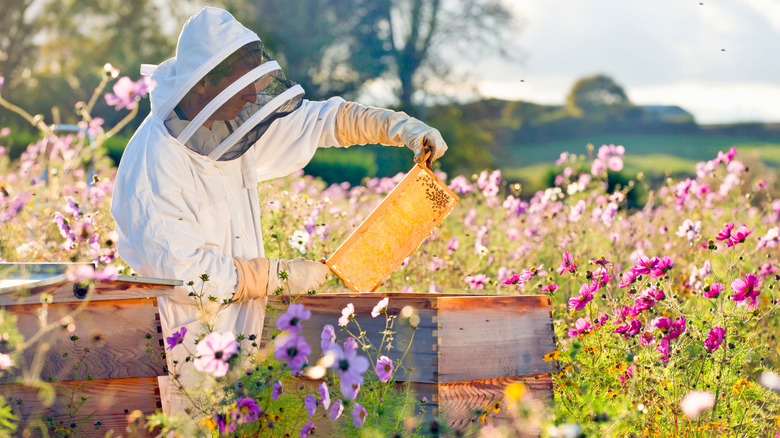The Difference Between Farmed Honey And Wild Honey
It's golden and sweet, and it'll last forever and then some — it's the wonderfully delicious and surprisingly nutritious honey. Now you may think that honey is honey no matter where it comes from or which bees made it, but in fact, there is quite a difference between specific types and quite a few classifications to be made.
The first distinction to make is between raw honey and regular (or pasteurized) honey. According to Healthline, regular honey is raw honey that has been treated and processed to get rid of certain impurities and mixed in additives (like sugars and/or other sweeteners) that will make the honey more uniform in taste and in texture and will improve the shelf life.
Raw honey is basically the honey straight from the comb. It's a lot cloudier and can vary greatly in texture, taste, and appearance, per Medical News Today. Although no large studies have confirmed this, many people believe that raw honey contains more antioxidants and is more nutritionally rich than its processed counterpart because of its natural state.
Farmed vs. wild honey
There are two more categories within the classification of raw honey: farmed honey and wild honey. The distinction is pretty clear. Farmed honey is produced on farms in bee boxes meant to house hives and be farmed for honey, while wild honey is taken from naturally forming hives in the wild, per Honey and Spice.
Depending on which bees pollinate which flowers from which plants near the hive, raw honey has a very wide range of flavors. Whether they're made by bees in the wild or under the masked eyes of a beekeeper, the quality, appearance, texture, and flavor profiles of the honey will depend on the bees; what matters is the environment and the flora available to the winged insects. Wild honey bees tend to have more diverse flora to pollinate, which would typically mean more interesting flavors, but the destruction of healthy wild beehives does not seem worth honey.

